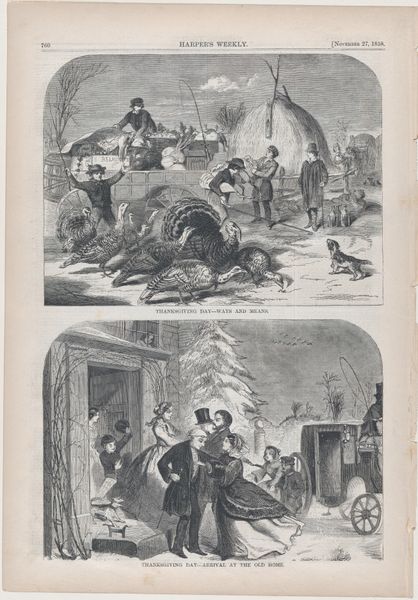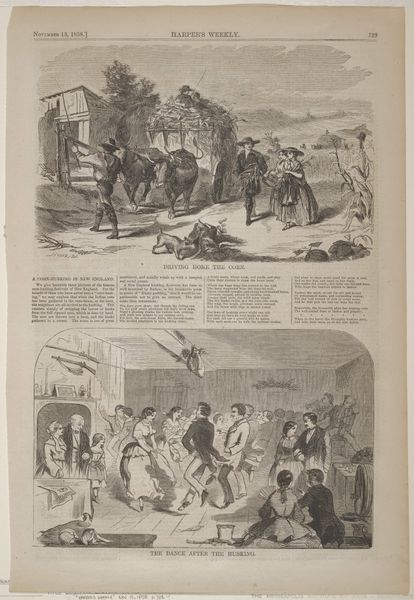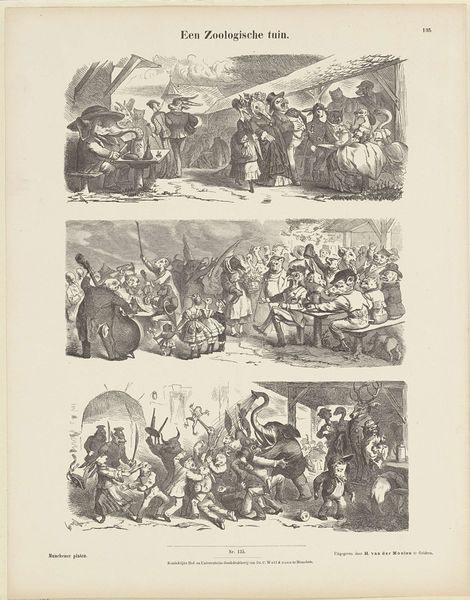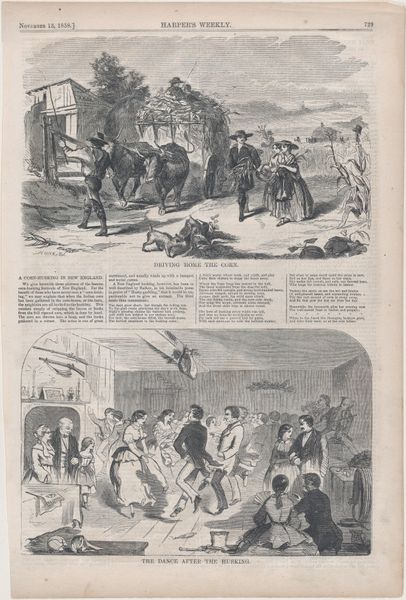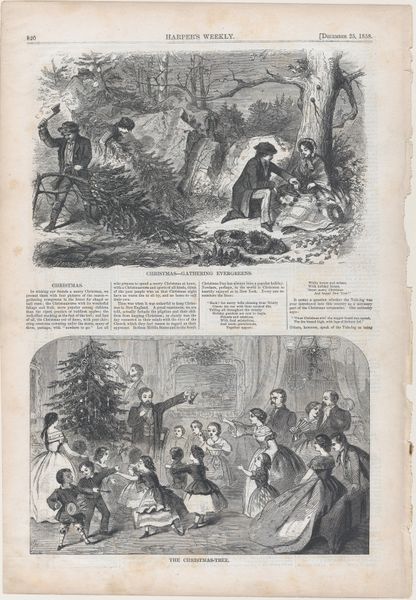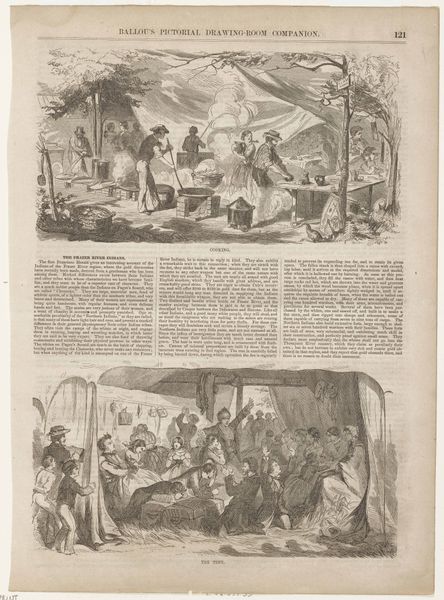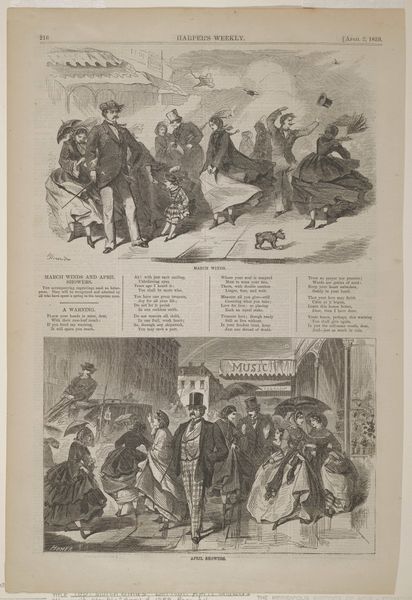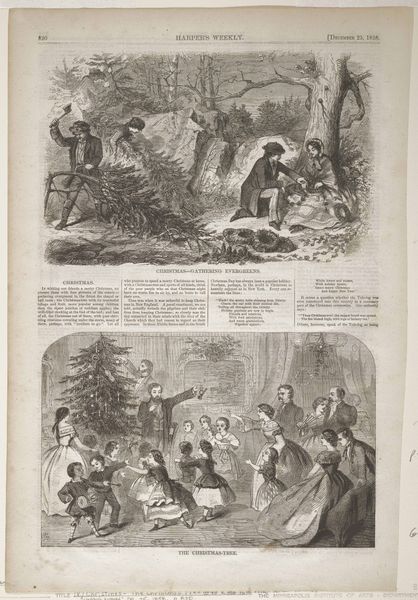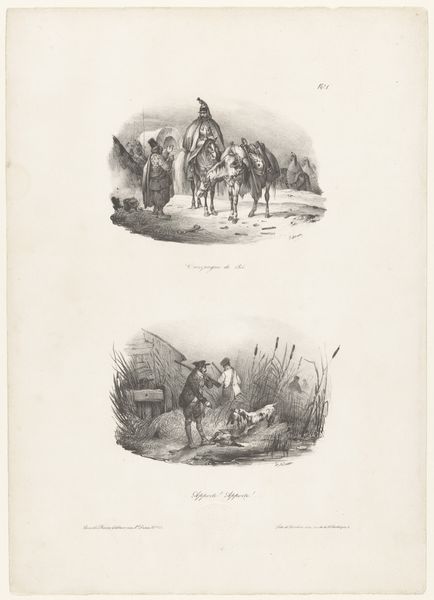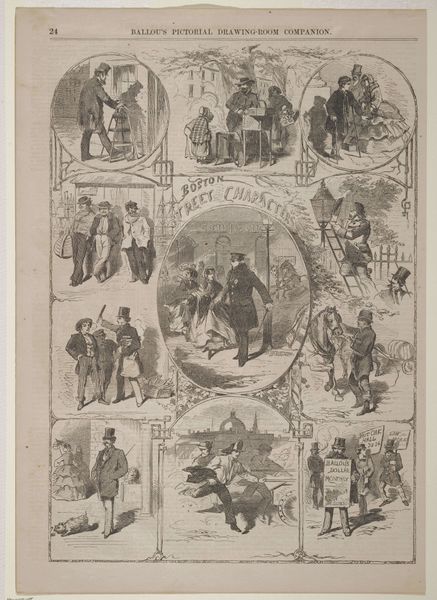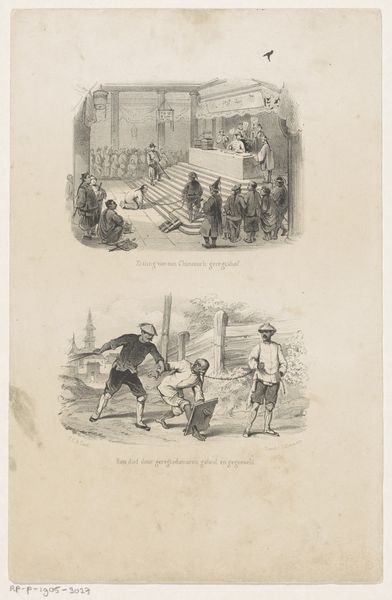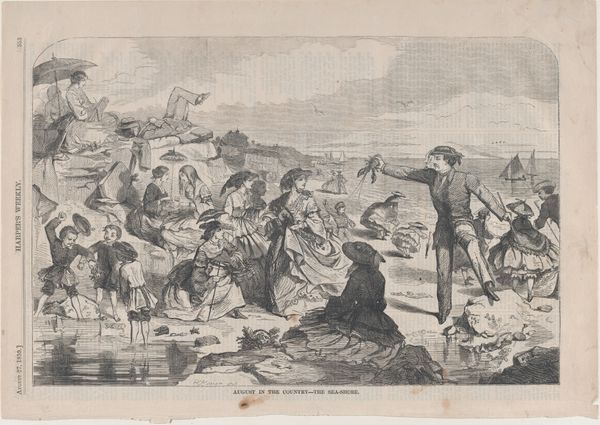
print, woodcut, wood-engraving, engraving
narrative-art
landscape
woodcut
united-states
sketchbook drawing
genre-painting
history-painting
wood-engraving
engraving
Dimensions: 6 1/2 x 9 3/16 in. (16.5 x 23.3 cm)
Copyright: Public Domain
Curator: Winslow Homer's wood engraving, "Thanksgiving Day -- Arrival at the Old Home," created in 1858, offers us a glimpse into 19th-century American traditions, as it appeared in Harper's Weekly. Editor: The initial impact is a charming depiction of seasonal festivity; the details look almost photo-realistic. There's an undeniable warmth emanating from this scene, despite the medium and wintry context. Curator: Homer's work appeared during a period of national expansion and increasing industrialization. This image idealizes a return to family and rural life. You see in the print the preparation for the holiday and the greeting that would follow. It suggests an appeal to shared values during an era of intense change, particularly concerning the rise of the abolition movement and the issues with enslaved people. Editor: Precisely, and it's critical to contextualize this supposed familial 'warmth'. This nostalgia is selective. The 'Old Home' in this print reflects and reinforces very specific power dynamics. Who is included in this comforting image and who is conspicuously excluded? Enslaved people, for example, often had their Thanksgiving and holiday celebrations stolen from them. Curator: Yes, we see a prosperous, white middle-class family reunited. Homer's engagement with abolitionism appears more explicitly later in his career. This early piece can be read as representative of the popular imagery in its time, revealing how widespread and hegemonic notions of the American family were constructed, but were very delimited in membership. Editor: I agree. In the lower image we observe a gathering and in the upper we observe turkeys ready to become part of the feast, the family and even the dog appear to be greeting or seeking scraps as the ingredients come in! Considering that context invites viewers to unpack whose labor produced this 'return' and what are the true politics that shape such supposedly idyllic scenes. Curator: So, viewing Homer’s print invites us not just to appreciate its aesthetic qualities but also to reflect on how such imagery plays a role in shaping and reinforcing historical narratives. It reveals much about whose stories get told and whose get erased. Editor: Ultimately, it reminds us that the visual culture surrounding holidays isn’t innocent, that images are artifacts deeply intertwined with historical injustices that we still grapple with today.
Comments
No comments
Be the first to comment and join the conversation on the ultimate creative platform.
